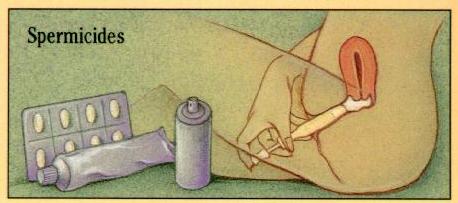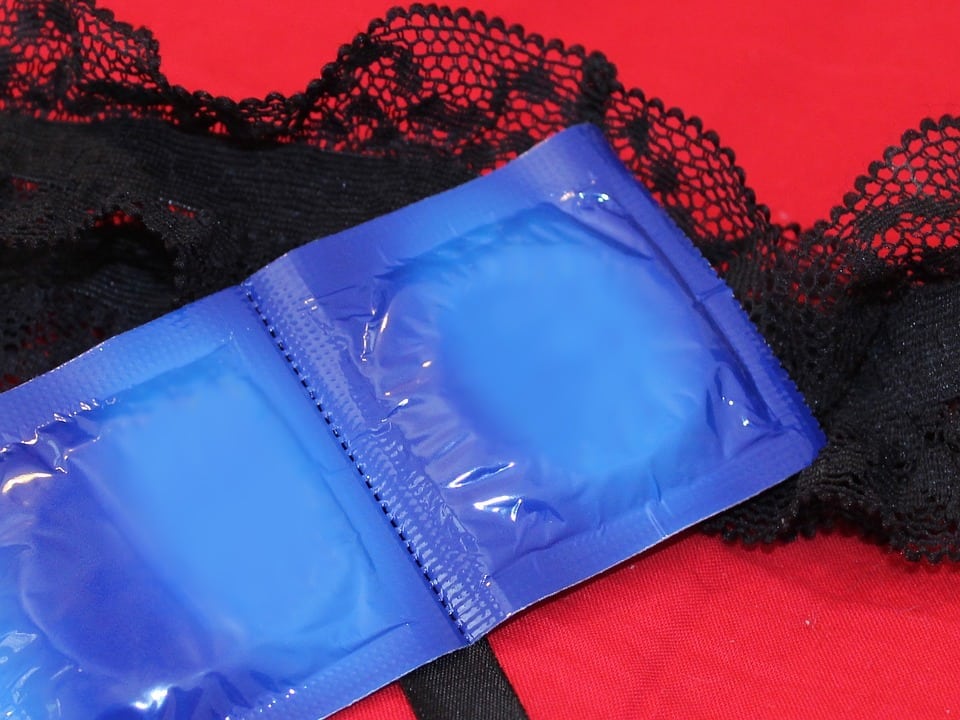Birth Control 101 is a multi-part series covering everything you need to know about birth control. It has all the details you need to make the best decision for your body, like how each method works, the pros and cons, effectiveness, cost and where to get them. After we’re done, you’ll basically be an expert, and you’ll definitely be able to make an informed decision about how to stay safe when you’re having sex.
This segment covers everything you need to know about Spermicide, often used with Barrier Methods.
Check out our Birth Control 101 section for details on every birth control method, and Birth Control Basics for a quick and dirty overview.
Spermicide
What is it? How does it work?
Spermicide is a non-hormonal barrier method of birth control. It comes in several forms. It can be a cream, gel, film, foam, or suppository – all of which are inserted deep into the vagina before having sex. Each spermicide if different, and there are many kinds available, so make sure to read the instructions (and check the expiration date) before using them. Most of the time, using spermicide is as easy as inserting a tampon. Creams and foams can be inserted with your finger or an applicator, which comes with the spermicide. Suppositories are inserted into your vagina with your finger or an applicator, then dissolve or melt to release spermicide. Films are small two by two inch sheets that dissolve to release spermicide. Whichever form you use contains chemicals that kill sperm and prevent sperm from moving, keeping them away from your cervix, uterus, and egg. After you get it up there, you might have to wait ten minutes before having sex – depending on the spermicide. Often, these types of spermicides are only effective for one hour after you put them in, so make sure you’ve got the timing right to stay protected.
Effectiveness
Spermicide is not a very effective method of birth control, and is typically only recommended when used as a “back up” with other forms of birth control. It is especially recommended with the cervical cap, diaphragm, and sponge. When used perfectly, spermicide is only 85% effective. When used typically, it is only 71% effective.
Spermicide also does not protect against any STDs, STIs, or HIV. In fact, spermicides that contain nonoxynol-9 can increase your risk of getting HIV and other STIs. To protect yourself against STDs, definitely use condoms.
Pros
- Non-hormonal.
- Can be purchased over the counter, without a prescription.
- Is effective for about one hour after putting it in.
- Easy to use and buy.
- Can be used as an effective “boost” with other forms of birth control for added protection.
Cons
- Not a very effective method of birth control.
- Does not protect you against STDs, HIV, or other STIs.
- Can actually increase your risk of contracting STDs, HIV, and other STIs.
- May be irritating to the penis or vagina. You may have to try several brands.
- Cannot be used safely many times in one day.
- A new suppository must be inserted before each time you have sex.
- You have to insert it deep in your vagina, which can be uncomfortable.
- They can be messy and leak out of your vagina.
- Can cause an allergic reaction.
- May have a strange taste, smell, or consistency.
Cost
Spermicide is relatively inexpensive, ranging from $1 per insert to $6 for a can.
Where to Get It
You can purchase spermicide at your local pharmacy, drug store, or any other store that sells personal health products, including online stores.
Don’t stop there… learn more about the other methods so you can find the perfect fit! Check out these articles in our Birth Control 101 series.
Birth Control 101: The Basics of Birth Control
Birth Control 101: The Pill
Birth Control 101: The Patch
Birth Control 101: The Ring
Birth Control 101: The Shot
Birth Control 101: The Implant
Birth Control 101: Hormonal and Copper IUDs
Birth Control 101: Male Condoms
Birth Control 101: Cervical Cap
Birth Control 101: Diaphragm
Birth Control 101: The Sponge
Birth Control 101: Spermicide
Birth Control 101: Pull Out Method
Birth Control 101: Emergency Contraception (Plan B)
Common Birth Control Myths
“Birth Control Methods.” Bedsider Birth Control Support Network. Bedsider, n.d. Web. 27 July 2013.
“Birth Control Methods.” Planned Parenthood. Planned Parenthood Federation of America, 2013. Web. 27 Jul. 2013.
“Types of Contraception.” Advocates for Youth, 17 Jan. 2012. Web. 27 July 2013.






